
|
|
|
|
|
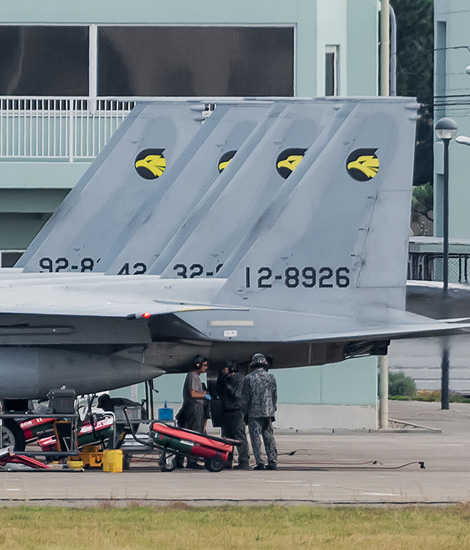
|
The F-15J Eagle in Operation Service; Komatsu, October 29, 2019
Eagles for the Air Defense, part 2; Text and Photograph's by Alex van Noye
After the first F-15J Eagles were delivered to the Japan Air Self Defense Force, the aircraft quickly entered service with the first operational F-15 squadrons. In total, the Air Force of Japan would receive 213 F-15J/DJ Eagles. The Eagles would fly at eight operational squadrons and a special aggressor unit and a test unit.
About a month after the first F-15 pilots from the Japan Air Self Defense Force (JASDF) completed their training, they flew the first two Japanese F-15J Eagles from the American Kadena Air Base in Okinawa to the Japanese airbase Gifu on the main island of Hokkaido in Japan. The two F-15Js that have just arrived are supported by commemorative photos taken by Defense Agency officials and corporate officials. These first two Eagles (02-8801 and 02-8802) have been reassembled by Mitsubishi Heavy Industries. The following eight aircraft were assembled as building kits by Mitsubishi Heavy Industries. Eventually, the remaining 155 fighter aircraft would be fully built during the licensed production of domestically manufactured parts. In the first ten years that the production line was open, a hundred aircraft were delivered to make four squadrons fully operational on the type. The National Defense Conference of 1982 approved the interim business estimate for 1981. Production was increased from 155 aircraft to 187 aircraft in 1985 and 223 aircraft in 1990. The mid-term defense force development plan reduced production to 210 combat aircraft in 1992. Ultimately, the final production plan would end at 213 F-15J/DJ Eagles in 1995. The production of the J-model of the F-15 Eagle finally ended on November 4, 1998 (Heisei 10). The last DJ version of the type rolled off the production line on October 8, 1999 (Heisei 11).
When the F-15s entered service in Japan, they would replace the Lockheed F-104J Starfighter with the 200 series squadron (201, 202, 203 and 204 squadron). The F-15s would also replace part of the F-4 Phantom II squadrons from the 300 series (303, 304, 305 and 306 squadron). The first batch of F-15 pilots was fully trained in the United States on Luke Air Force Base before leaving for Japan. On December 7, 1981, a pilot trained with United States Air Force personnel at Luke Air Force Base which led to the formation of a temporary F-15 squadron at the Nyatubaru Air Base. On December 21, the squadron was renamed as the 202 Hikotai, which was previously an
|
|
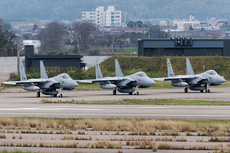
|
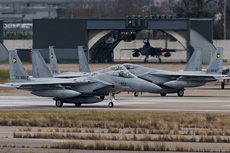
|
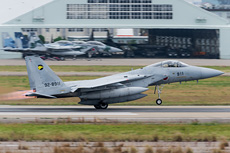
|

|

|
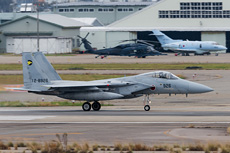
|
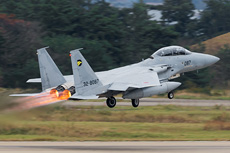
|
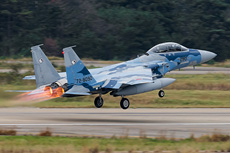
|
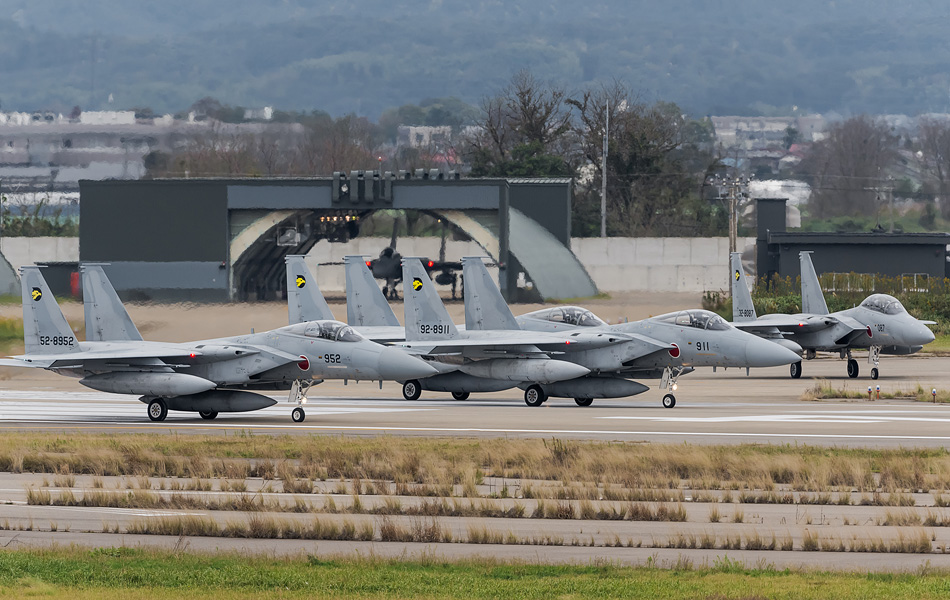
|
F-104J squadron. The 202 Hikotai then became a conversion and training unit for the F-15J pilots. The unit was mainly equipped with the two-seat training variant of the F-15. From March 24, 1984, the second squadron was retrained to use the F-15J Eagle. This unit was the 203 Hikotai at Chitose Air Base in northern Japan. This unit also stopped its activities with the F-104J and subsequently became an Eagle unit. Soon the 204 Hikotai followed in 1985. This unit at Momori would also phase out the Starfighter quickly, at that time it went anyway quickly with the phasing out of the F-104J/DJ. The fourth and final Starfighter unit that converted to the Eagle was the 204 Hikotai at Chitose Air Base on March 2, 1987. The F-104J/DJ Starfighter left the Japanese scene completely after the conversion of the 204 Hikotai.
After the conversion of the F-104J/DJ Starfighter units, the first F-4EJ Phantom II units were already converted to the F-15J/DJ Eagle. On March 19, 1986, the 303 Hikotai would become the first Phantom unit to start the conversion to the F-15 Eagle. The 303 Hikotai then flew the F-4EJ Phantom at Komatsu Air Base in western Japan. The next Phantom unit that would make the switch was the 304 Hikotai that was based on Tsuiki on the southern island of the Japanese mainland. This unit was operational with the F-15 Eagle from January 20, 1990. The F-15J/DJ Eagle had been in possession of the JASDF for more than 10 years and six units of the type were flying in the meantime. At Hyakuri Air Base near the Japanese capital Tokyo, the 305 Hikotai started with the switch to the F-15 Eagle. The last operational squadron that went through the conversion was the 306 Hikotai on Komatsu Air Base on March 18, 1997. In the end, two squadrons continued to fly with the F-4EJ Phantom II in Japan, which were the 301 Hikotai and the 302 Hikotai. The last unit to receive the F-15 was the aggressor squadron that was based on Nyatubaru at the time. This aggressor unit still flew with the outdated Mitsubishi F-1. Now that the F-15 was received at this unit, it was possible to train the operational pilots extensively in Japan with serious opponents. The 202 Hikotai that had done the conversion type so far, was discontinued on October 3, 2000. Instead of this unit there is a specialized training squadron available. This unit became 23 Hikotai on Nyatubaru and was given the full training task for the training of Japanese fighter pilots.
Today, the Japanese F-15J/DJ fleet still consists of the seven operational squadrons, a training unit and an aggressor squadron. In the last ten years, various squadrons have been redistributed across Japan. On January 19, 2009, 204 Hikotai was relocated from the Baili Air Base to Naha Air Base on Okinawa. 304 Hikotai, too, was due to leave for Naha in Okinawa, as this unit was relocated from Tsuiki to its new home on January 31, 2016. There was a great need to place these units on Okinawa due to an increasing Chinese threat. The current F-15 squadrons are much better distributed among the four military districts in Japan as a result of the reorganization. As a result, every military district has two F-15 squadrons with which the country can be systematically defended. In the north on Chitose Air Base the Second Wing (2 Kokudan) is based. This unit consists of two squadrons, namely the 201 and 203 Hikotai. The Sixth Wing (6 Kokudan) is based on Komatsu Air Base in the central district. This wing consists of two operational units and an aggressor squadron, namely the 303 and 306 Hikotai and the Tactical Aviation Instruction School. At Nyatubaru, the Fifth Wing (5 Kokudan) is based which is made up of the 305 and 23 Hikotai in the Western district. The southwestern district at Okinawa consists of the 204 and 304 Hikotai. These units are based at Naha Air Base and form the Ninth Wing (9 kokudan). Finally, the Test and Evaluation unit is based at Gifu. The F-15J/DJ Eagle fleet is now tactically distributed over Japan to guard national airspace.
|

|
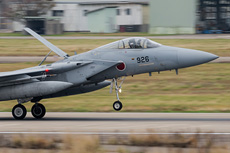
|
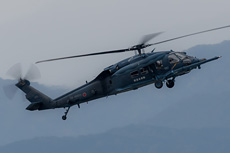
|
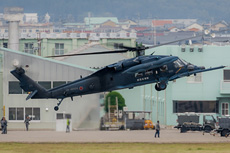
|
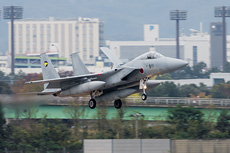
|

|
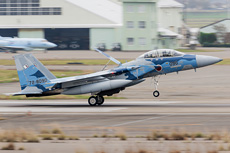
|
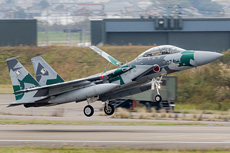
|
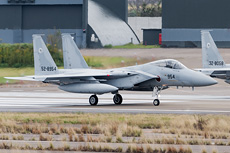
|
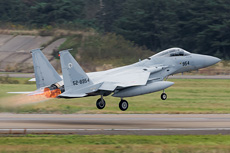
|
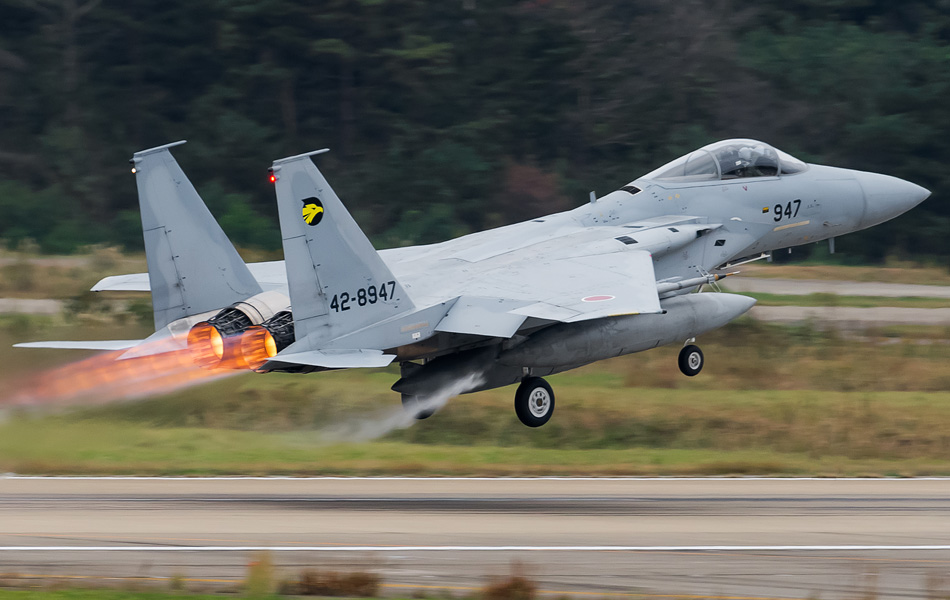
|
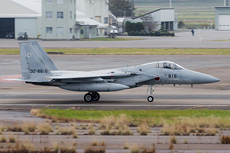
|
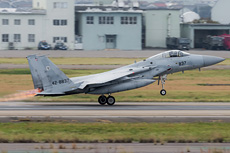
|
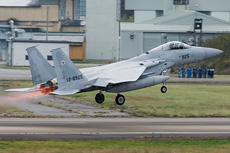
|
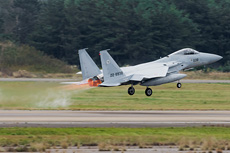
|
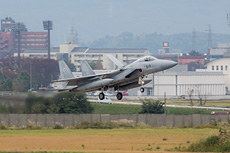
|

|

|
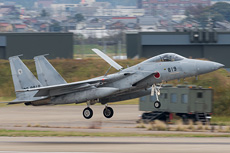
|
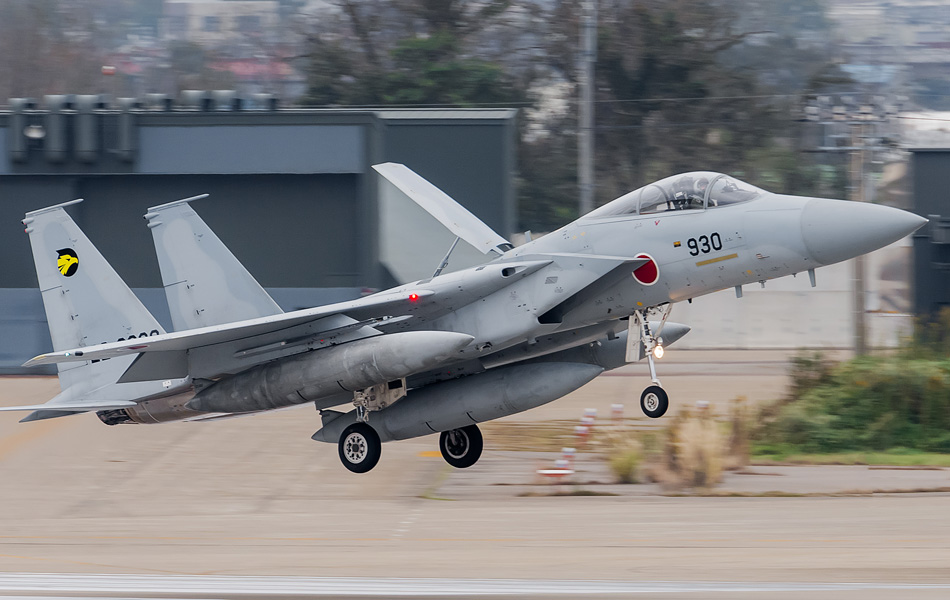
|
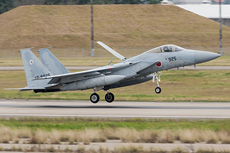
|
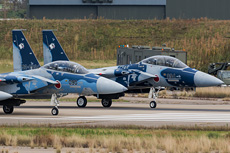
|
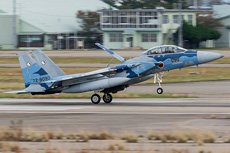
|
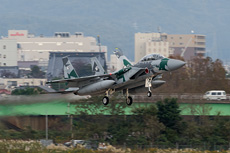
|
|
|

|







